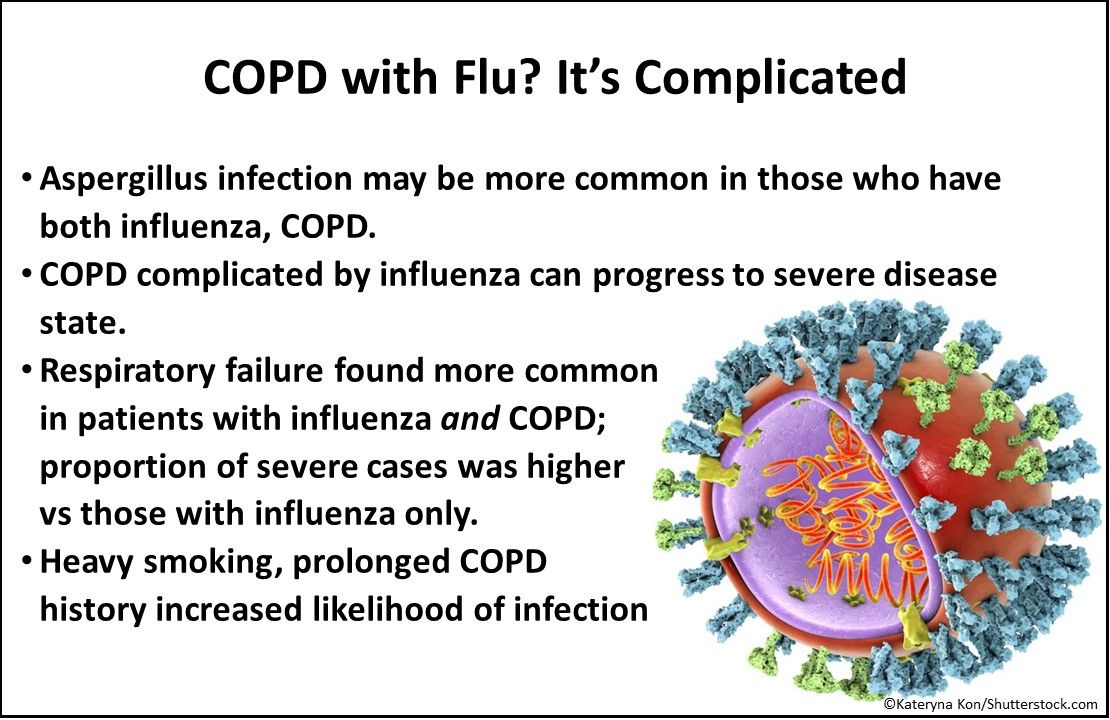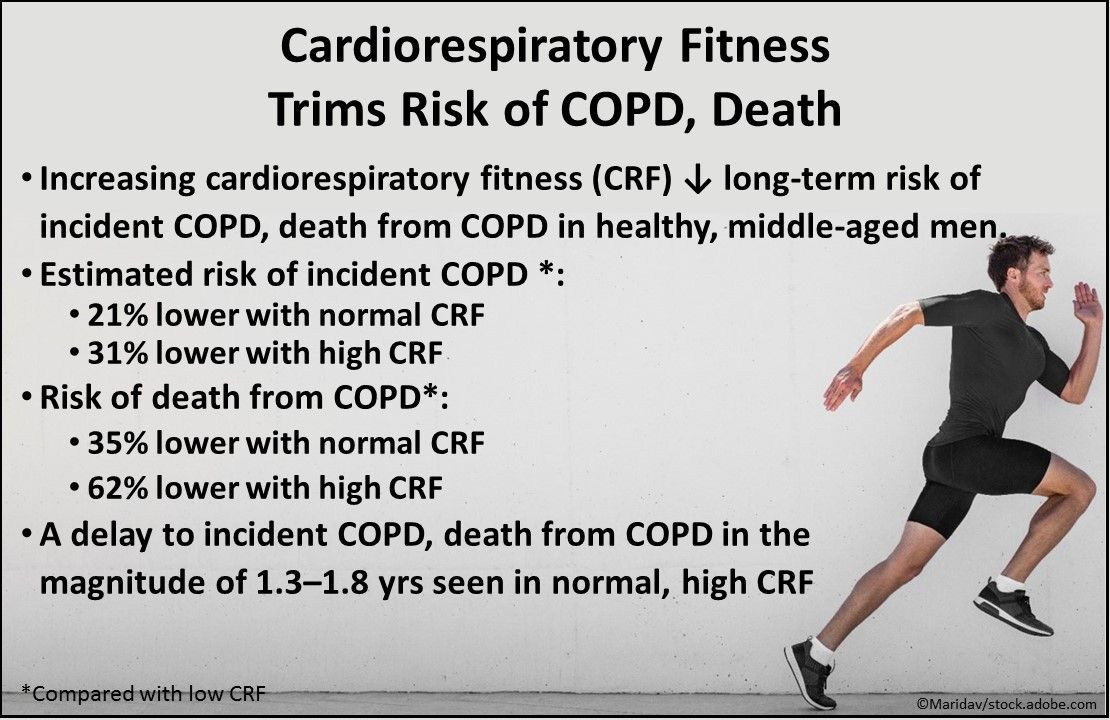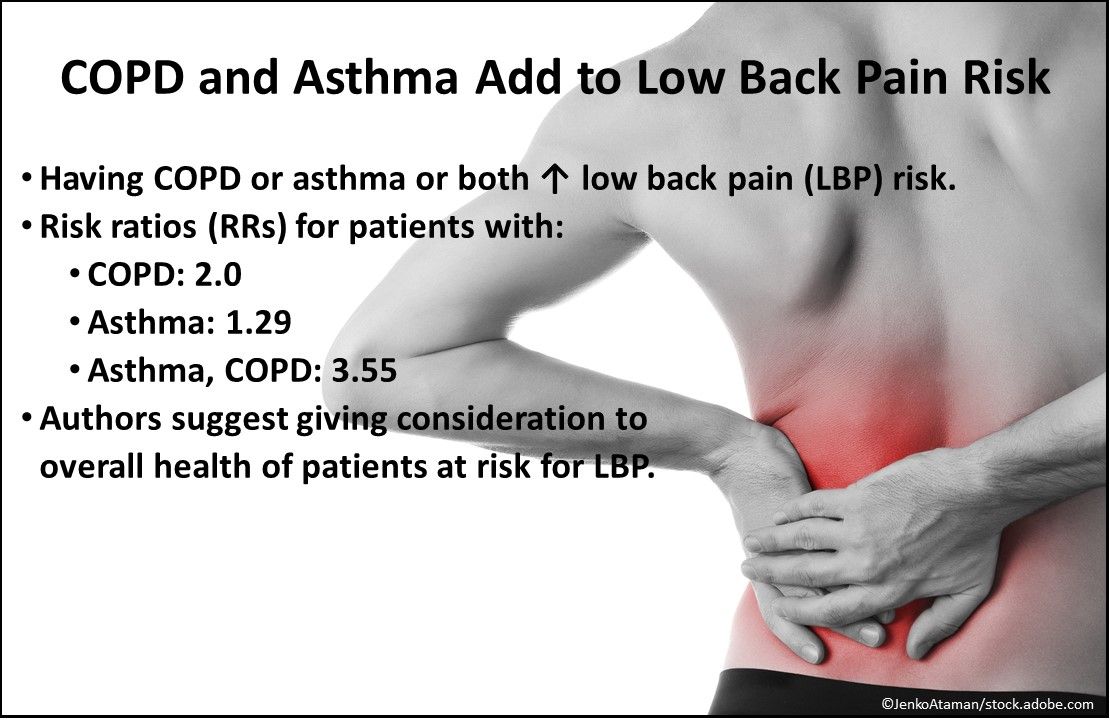© 2025 MJH Life Sciences™ , Patient Care Online – Primary Care News and Clinical Resources. All rights reserved.
7 New Looks into COPD
Can air pollution cause emphysema? Can yoga positively impact lung function? New research has answers to these questions plus 5 more.

Air pollution precipitates emphysema progression. Long-term exposure to ambient air pollutants was significantly associated with increasing emphysema and worsening lung function in a new study published August 13 in JAMA. Baseline ambient concentrations of ambient O3, fine particulate matter, NOx, and black carbon were statistically significantly associated with greater increases in emphysema assessed quantitatively with computed tomographic (CT) imaging. Concentrations of O3 and NOx also were linked with increases in emphysema over follow-up. Ambient O3 concentrations were significantly associated with a greater decline in FEV1 per 10 years at baseline and during follow-up.

Vapers are at risk. Electronic cigarette use is said to be safer than tobacco smoking, but researchers recently found that chronic vaping places vapers at risk for chronic lung disease as it increases proteolysis in the lungs and disrupts the protease-antiprotease balance. Neutrophil elastase and matrix metalloprotease activities/protein levels were equally elevated in vapers’ and smokers’ bronchoalveolar lavage vs nonsmokers’. Exposure of isolated neutrophils and macrophages to nicotine elicited dose-dependent increases in protease release. The study was published online on August 7 in the American Journal of Respiratory and Critical Care Medicine.

DLCO passes assessment test. Impairment in DLCO was associated with increased COPD symptoms, reduced exercise performance, and severe exacerbation risk even after spirometry and CT evidence of emphysema were accounted for, according to a recent study that analyzed data from the Genetic Epidemiology of COPD study. Every 10% predicted decrease in DLCO was associated with symptoms and QoL, exercise performance, and severe exacerbation rate. Severe impairment in DLCO alone, FEV1 alone, or both DLCO and FEV1 was associated with significantly worse morbidity. The study was published online on July 25 in Chest.

Fungal infections common in COPD patients with influenza. Aspergillus infection may be more common in patients who have both influenza and COPD, and COPD complicated by influenza can progress to a severe disease state, according to a study published July 22 in Respiration. Among the patients with influenza, researchers found the positive fungal culture rate and rates of antifungal drug and systemic corticosteroids use were higher for patients who had COPD vs without COPD. Compared to patients who had only influenza, respiratory failure was more common in those who had both COPD and influenza, and the proportion of severe cases was higher. Among the patients who had COPD, the positive fungal culture rate and the rate of systemic corticosteroids use were higher for those with influenza vs without influenza. Heavy smokers and patients with a prolonged COPD history were more likely to be infected by influenza.

CRF trims COPD risk and death in men. Higher levels of CRF were associated with a lower long-term risk of incident COPD and death from COPD in healthy, middle-aged men in a study published June 17 in Thorax. Compared with low CRF, the estimated risk of incident COPD was 21% lower in patients with normal CRF and 31% lower in those with high CRF; the risk of death from COPD was 35% lower in patients with normal CRF and 62% lower with high CRF. There was a delay to incident COPD and death from COPD in the magnitude of 1.3–1.8 years in normal and high CRF vs low CRF.

Yoga lifts exercise capacity and lung function. Performing yoga may have robust effects on exercise capacity and pulmonary function in patients with COPD. A meta-analysis, published July 29 in Clinical Rehabilitation, included 11 randomized controlled trials showed evidence for effects of yoga vs no treatment on QoL on the COPD Assessment Test, exercise capacity assessed by the 6-minute walk test, and pulmonary function assessed by FEV1 predicted. Only the effects on exercise capacity and pulmonary function were robust. Yoga breathing techniques may be an effective adjunct intervention for patients with COPD.

COPD and asthma increase LBP risk. Having COPD or asthma or both increased the risk of troublesome LBP in a large prospective cohort study published online on July 19 in the European Spine Journal. Among the 17 177 study participants, the RR for patients with COPD was 2.0; 1.29 for those with asthma; and 3.55 for those with asthma and concurrent COPD. The authors suggested giving consideration to the overall health of patients at risk for troublesome LBP and to take the multimorbidity perspective into consideration.
Air pollution precipitates emphysema progression, vaping elevates chronic lung disease risk, yoga may be beneficial in improving lung function-these are some of the latest developments in chronic obstructive pulmonary disease (COPD) research. Scroll through the slides below to find concise summaries of key points for clinical practice.Â




